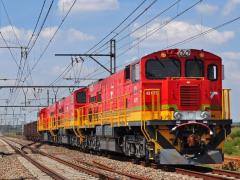Southern Africa’s airfreight sector is gearing up for a stronger finish to the year, with operators reporting a noticeable uptick in demand after a muted start. Lennon Perumal, senior multimodal operations controller at Spedag SA, says the market is already shifting as shippers rush to move goods ahead of the holiday season and ongoing port congestion pushes more small and medium-sized orders into the air. “Compared to the first half of this year, things have started out slow, but we see an increase in the second half,” he told Freight News. “Airfreight volumes normally peak towards the end of the year, and when the port is congested, customers tend to lean more towards airfreight to ensure timely delivery.” According to Perumal, the rebound is being driven not only by pre-holiday demand, but by wider improvements across key cargo segments. “Volumes will pick up, especially on fast-moving consumer goods (FMCG),” he says. “We have, however, also noted renewed momentum in other sectors. Mining and engineering cargo, in particular, has seen a rise in volumes.” However, he warns that broader cost pressures may temper the upswing. “The constant fluctuations in fuel prices and operational costs may impact pricing, which in turn can affect volume growth,” he says. With demand on the rise, capacity constraints are becoming more pronounced. Perumal says the industry is already feeling the squeeze, with limited availability on cargo aircraft and shrinking space on passenger flights, particularly during peak periods. At the same time, operators are grappling with increased fuel prices, higher labour costs and mounting maintenance expenses, all of which are placing pressure on margins and pushing up freight rates. These pressures are also accelerating the industry’s shift toward more advanced technology. According to Perumal, as capacity tightens and costs climb, more logistics companies are investing in digital tools to enhance tracking, strengthen communication and optimise operations. This increased visibility and efficiency, he says, benefits not only the operators trying to manage tight margins, but also customers who need faster, more reliable movement of their cargo. “We are constantly trying to give our customers the best service possible by continuously trying to find better solutions daily.” Despite the improving outlook, Perumal cautions that airfreight will always remain a premium option. “It’s difficult, as airfreight is a much higher-priced transport mode, so it depends on the customer and how quickly the cargo needs to reach its destination,” he says. While pre-Covid demand offered greater stability, he notes that many clients are now shifting certain commodities to cheaper modes to remain competitive. For Perumal, the key to navigating this shifting landscape comes down to three key principles – communication, information and coordination. “These form the foundation of delivering effective and reliable airfreight solutions in a cost- sensitive market.” LV












